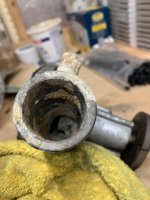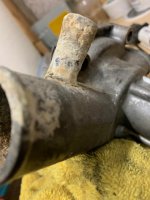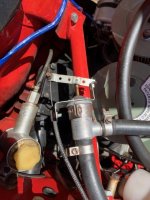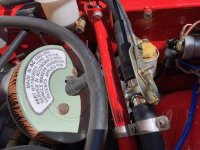Continuing on, I used this heater valve and adapted it to the Alpine. I mentioned previously I've tried three of the "reproduction" heater valves, and each one failed, and this has been over a period of three years and at around $90-$100 each, kind of frustrating.
This is a push to "on" valve, so that worked out well. I've had to reroute the hose, but overall the function is good, and presents pretty well. Being a "ball" valve, I'm sure there's not going to be leakage, but only time will tell. Tried to bring the engine up to temp yesterday to check for leaks. And sure enough, I looked and there was a small drip going on. Not to worry, it wasn't the valve, or the hoses.
It was the fuel line dripping fuel right on the exhaust manifold. Sheesh!!!!!
Sure enough, it was the SAE J3057 hose, and it's only about two years old. So, that being said, I'm now convinced that the ethanol probably did do the job on this hose. I'm just assuming that you folks on the forum are correct about that.
We all know that the forum is never wrong. Right? Hehe.
But this time I believes.




